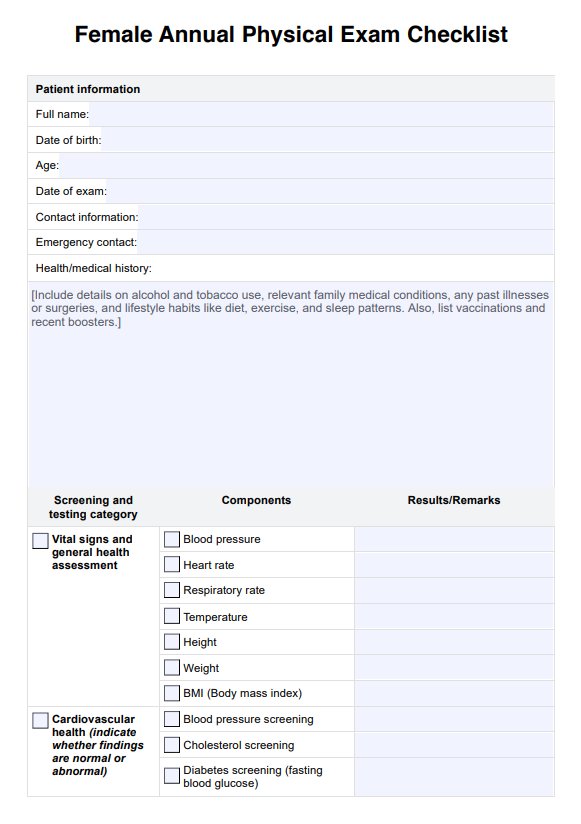A woman's yearly physical includes a comprehensive evaluation of vital signs, screening tests (such as blood pressure screening and diabetes screening), and assessments of overall health. Additional elements may include a breast exam, pelvic exam, and blood work based on age and health history.

Female Annual Physical Exam
Discover the essential Female Annual Physical Exam Checklist, complete with an example to guide you. Download our comprehensive PDF for your health needs.
Female Annual Physical Exam Template
Commonly asked questions
During a women's annual exam, expect a health history review, physical assessments, and preventive screenings like pap smear, cholesterol, and relevant tests. The healthcare provider may also conduct lifestyle and risk factor discussions to personalize ongoing care.
An annual physical is a comprehensive health check that focuses on physical assessments and screening tests to detect any health conditions. A wellness exam, on the other hand, focuses more on preventive health, reviewing lifestyle habits and other risk factors, and setting goals for maintaining overall wellness.
EHR and practice management software
Get started for free
*No credit card required
Free
$0/usd
Unlimited clients
Telehealth
1GB of storage
Client portal text
Automated billing and online payments











